Numerical Simulation Study on Deformation Mechanism of Tunnel–Landslide Orthogonal Systems and Early Warnings of Imminent Sliding
Abstract
1. Introduction
2. Analysis of Engineering Geological Conditions
2.1. Overview of the Tunnel Area
2.2. Disease Analysis
2.3. Mechanical Modeling of Tunnel–Landslide Orthogonal System
3. Numerical Simulation Analysis of Deformation Mechanism of Tunnel–Landslide Orthogonal System
3.1. Numerical Model and Boundary Condition Selection
3.2. Solid Modeling of Tunnel–Landslide Orthogonal System
3.3. Establishment of Model Contact Surfaces and Constraints
3.4. Numerical Simulation Program Design
3.5. Stability Analysis under Original Plan Conditions
3.6. Stability Analysis under Different Reduction Conditions
- (1)
- Displacement analysis
- (2)
- Plastic-zone analysis
4. Numerical Simulation Analysis of NPR Constant-Resistance Large Deformation Anchor Cable for Early Warning of Slip Criticality
4.1. Establishment of the Model
4.2. NPR Constant-Resistance Large Deformation Anchor Cable Constitutive Model Construction
4.3. NPR Constant-Resistance Large Deformation Anchor Cable Axial Force Analysis
5. Establishment of Tunnel–Landslide Orthogonal System Early Warning Model and Engineering Application
5.1. Early Warning Model of Tunnel–Landslide Orthogonal System Based on Newtonian Force Variation
- (1)
- Overall stabilization mode: As shown in Figure 24a, the Newtonian force monitoring curve keeps a constant value of the vertical coordinate, and the slope is 0, which is approximated as a horizontal straight line. At this stage, the slope and the tunnel maintain a relatively stable state, and the whole tunnel–landslide orthogonal system is in a stable state.
- (2)
- Slope crack mode: As shown in Figure 24b,c, the Newtonian force monitoring curve shows an increasing trend with the development of time or an instantaneous surge, and the slope of the monitoring curve is greater than 0, showing a sudden increase or jump phenomenon. At this stage, continuous cracks are generated on the slope surface, and the tunnel behaves in a relatively stable state. The larger the increasing slope or jumping variable is, the larger the slope cracks are and the larger the landslide thrust on the tunnel is, and the tunnel structure will experience tension bending or shear damage, resulting in cracking of the second lining, through cracks at the top, slagging, and other phenomena, and the whole tunnel–landslide orthogonal system enters into a relatively unstable state.
- (3)
- Tunnel failure mode: As shown in Figure 24d, the Newtonian force grows in a short period and there is a sudden drop. The Newtonian force monitoring curve slope from the more than 0 growth stage suddenly changes to the less than 0 decline stage, indicating that the slope surface cracks have been developed through to the interior of the slide body, with the formation of a complete sliding surface. At this stage, the landslide occurs to a greater extent, the slope will appear with large cracks and large fractures, and the tunnel by the landslide thrust exceeds the critical maximum value. There will be a greater degree of tensile bending and shear damage, and the tunnel, if located in the interior of the landslide body section of the vault, may present larger deformation or even collapse. If the tunnel is located in the external section of the landslide, circular cracks will appear at the end of the tunnel, and in serious cases, even transverse shear faults in the direction of landslide movement will occur. Newton’s force monitors the curve slope, the positive and negative turning point, which is the tunnel–landslide orthogonal system near the slip damage warning point.
5.2. Real-Time Monitoring Curve Analysis of Newtonian Force in Tunnel–Landslide Orthogonal System
6. Conclusions
- (1)
- Through the stability analysis under different folding conditions, with the increase in folding coefficient, the shear strength of the rock and soil body in the slip zone decreases, resulting in a weak fragmentation zone. The upper slide body under the action of self-gravity stress gradually produces x-axis positive displacement and landslides occur. By the action of landslide thrust, the distribution of the plastic zone of the tunnel surrounding the rock changes gradually, the distribution of the tensile zone at the top and bottom decreases gradually, and the distribution of the shear zone at the left and right sides increases gradually. Therefore, tunnels located inside landslides undergo extrusion and shear damage by gravity and landslide thrust from the upper soil mass, which is accompanied by vault cracking, falling blocks, and circumferential cracks.
- (2)
- Through the numerical simulation analysis of the monitoring effect of the NPR constant-resistance large deformation anchor cable in the tunnel–landslide orthogonal system, with the decrease in the shear strength parameter of the geotechnical body, the tunnel–landslide orthogonal system gradually enters into the state of instability. At this time, the pre-tensioning force of the NPR constant-resistance large deformation anchor cable in the stable state is released, and the axial force undergoes a sudden drop. With the gradual cessation of landslide, the constant resistor is gradually tightened, the axial force increases again and keeps a certain constant-resistance value unchanged, and the tunnel–landslide orthogonal system enters a new stable state. It coincides with the Newtonian force disaster warning model of landslide established by the Academician He Manchao.
- (3)
- Based on the numerical simulation analysis of the tunnel–landslide orthogonal system and the Newtonian force disaster warning model of landslides proposed by the Academician He Manchao, three Newtonian force monitoring and warning models of the tunnel–landslide orthogonal system were established. The scientificity and authenticity of the numerical simulations are proved through the comparison of actual engineering field tests. In the natural ground stress stage, the NPR constant-resistance large deformation anchor cable axial force value is kept at a level, and the tunnel–landslide orthogonal system is in a stable state. After the seismic disturbance, the axial force of the NPR constant-resistance large deformation anchor cable increases and decreases to different degrees, and then cracks are generated in the upper slope, the tunnel lining produces through cracks and cracked blocks, and the monitoring system successfully sends out the warning of near-slip.
Author Contributions
Funding
Institutional Review Board Statement
Informed Consent Statement
Data Availability Statement
Conflicts of Interest
References
- Yamada, T.; Watari, M. Landslides and Slope Failures and Their Control; Science Press: Beijing, China, 1980. [Google Scholar]
- Satıcı, Ö.; Güngör, G. Effects of paleo-rock landslide and heavy rainfalls to tunnel excavation. In Proceedings of the World Tunnel Congress, Dubrovnik, Croatia, 22–27 May 2015. [Google Scholar]
- Zhou, D.P.; Mao, J.Q.; Zhang, L.X.; Ma, H.M. Relationship between tunnel deformation with slope disasters and its prediction model. Chin. J. China Railw. Soc. 2002, 24, 81–86. [Google Scholar]
- Zhu, K.; Zhu, H. Example analysis on mechanism of interaction between landslide and tunnel. Chin. J. Undergr. Space Eng. 2006, 5, 809–812+817. [Google Scholar]
- Ma, H.M. Discussion on problems of slope disaster and tunnel deformation. Chin. J. Rock Mech. Eng. 2003, 22 (Suppl. S2), 2719–2724. [Google Scholar]
- Tao, Z.; Zhou, D. Model testing research on controlling tunnel deformation in landslide field with antislide piles. Chin. J. Rock Mech. Eng. 2004, 23, 457–460. [Google Scholar]
- He, M.; Tao, Z.; Zhang, B. Application of remote monitoring technology in landslides in the Luoshan mining area. Min. Sci. Technol. 2009, 19, 609–614. [Google Scholar] [CrossRef]
- He, M. Research on the double-block mechanics based on Newton force measurement. Chin. J. Rock Mech. Eng. 2016, 35, 2161–2173. [Google Scholar]
- He, M. Real-time remote monitoring and forecasting system for geological disasters of landslides and its engineering application. Chin. J. Rock Mech. Eng. 2009, 28, 1081–1090. [Google Scholar]
- Tao, Z.; Li, H.; Sun, G.; Yin, L.; Zhang, X. Development of monitoring and early warning system for landslides based on constant resistance and large deformation anchor cable and its application. Rock Soil Mech. 2015, 36, 3032–3040. [Google Scholar]
- Yang, X.; Hou, D.; Hao, Z.; Tao, Z.; Shi, H.; Jin, K. Study on the stability and remote real-time monitoring for high steep slope in Nanfen open pit iron mine. J. Min. Saf. Eng. 2017, 34, 1000–1007. [Google Scholar]
- Li, B.; Zhang, Q.; Wang, W.; Zhao, Q.; Wang, C.; He, K.; Gao, Y.; Zhang, X. Geohazard monitoring and risk management of high-steep slope in the Wudongde dam area. J. Geomech. 2020, 26, 556–564. [Google Scholar]
- Su, M.; Liu, Y.; Xue, Y.; Cheng, K.; Ning, Z.; Li, G.; Zhang, K. Detection method of karst features around tunnel construction by multi-resistivity data-fusion pseudo-3D-imaging based on the PCA approach. Eng. Geol. 2021, 288, 106127. [Google Scholar] [CrossRef]
- Zhou, W. Analysis of Landslide-Tunnel Interaction and Control Measures. Ph.D. Thesis, China Academy of Railway Research, Beijing, China, 2020. [Google Scholar]
- Wu, H.; Wu, D.; Ma, H.; Zhang, L. Research of type of tunnel-landslide system and tunnel deformation mode. Chin. J. Rock Mech. Eng. 2012, 31 (Suppl. S2), 3632–3642. [Google Scholar]
- Qiang, X. Understanding the landslide monitoring and early warning: Consideration to practical issues. J. Eng. Geol. 2020, 28, 360–374. [Google Scholar] [CrossRef]
- Wu, H.; Chen, X.; Ai, H. Research on the force exerting mode model test of tunnel-landslide orthogonal system. J. Railw. Eng. Soc. 2016, 33, 1–5. [Google Scholar]
- Lyness, J.F.; Owen, D.R.J.; Zienkiewicz, O.C. The finite element analysis of engineering systems governed by a non-linear quasi-harmonic equation. Comput. Struct. 1975, 5, 65–79. [Google Scholar] [CrossRef]
- Chen, G.Q.; Huang, R.Q.; Shi, Y.C.; Xu, Q. Stability analysis of slope based on dynamic and whole strength reduction methods. Chin. J. Rock Mech. Eng. 2014, 33, 243–256. [Google Scholar] [CrossRef]
- Xu, W.; Sun, W.; Jiang, L.; Wang, R. Exploring the influence of slope boundary extent on stability calculation in FLAC3D numerical simulation. Road Traffic Sci. Technol. Appl. Technol. Ed. 2019, 15, 8–9. [Google Scholar]
- Tao, Z.; Wang, Y.; Zhu, C.; Xu, H.; Li, G.; He, M. Mechanical evolution of constant resistance and large deformation anchor cables and their application in landslide monitoring. Bull. Eng. Geol. Environ. 2019, 78, 4787–4803. [Google Scholar] [CrossRef]
- Wang, F.N.; Guo, Z.B.; Qiao, X.B.; Fan, J.Y.; Li, W.; Mi, M.; He, M.C. Large deformation mechanism of thin-layered carbonaceous slate and energy coupling support technology of NPR anchor cable in Minxian Tunnel: A case study. Tunn. Undergr. Space Technol. 2021, 117, 104151. [Google Scholar] [CrossRef]
- Zhang, Y.; Li, H.; Sheng, Q.; Wu, K.; Chen, G. Real time remote monitoring and pre-warning system for Highway landslide in mountain area. J. Environ. Sci. 2011, 23, S100–S105. [Google Scholar] [CrossRef] [PubMed]
- Guo, Y. Stability Evaluation of Highway Rocky Slopes Based on Anchor Axial Force Monitoring. Ph.D. Thesis, Chang’an University, Xi’an, China, 2011. [Google Scholar]
- Xu, Q.; Peng, D.; He, C.; Qi, X.; Zhao, K.; Xiu, D. Theory and method of monitoring and early warning for sudden loess landslide—A case study at Heifangtai terrace. J. Eng. Geol. 2020, 28, 111–121. [Google Scholar] [CrossRef]
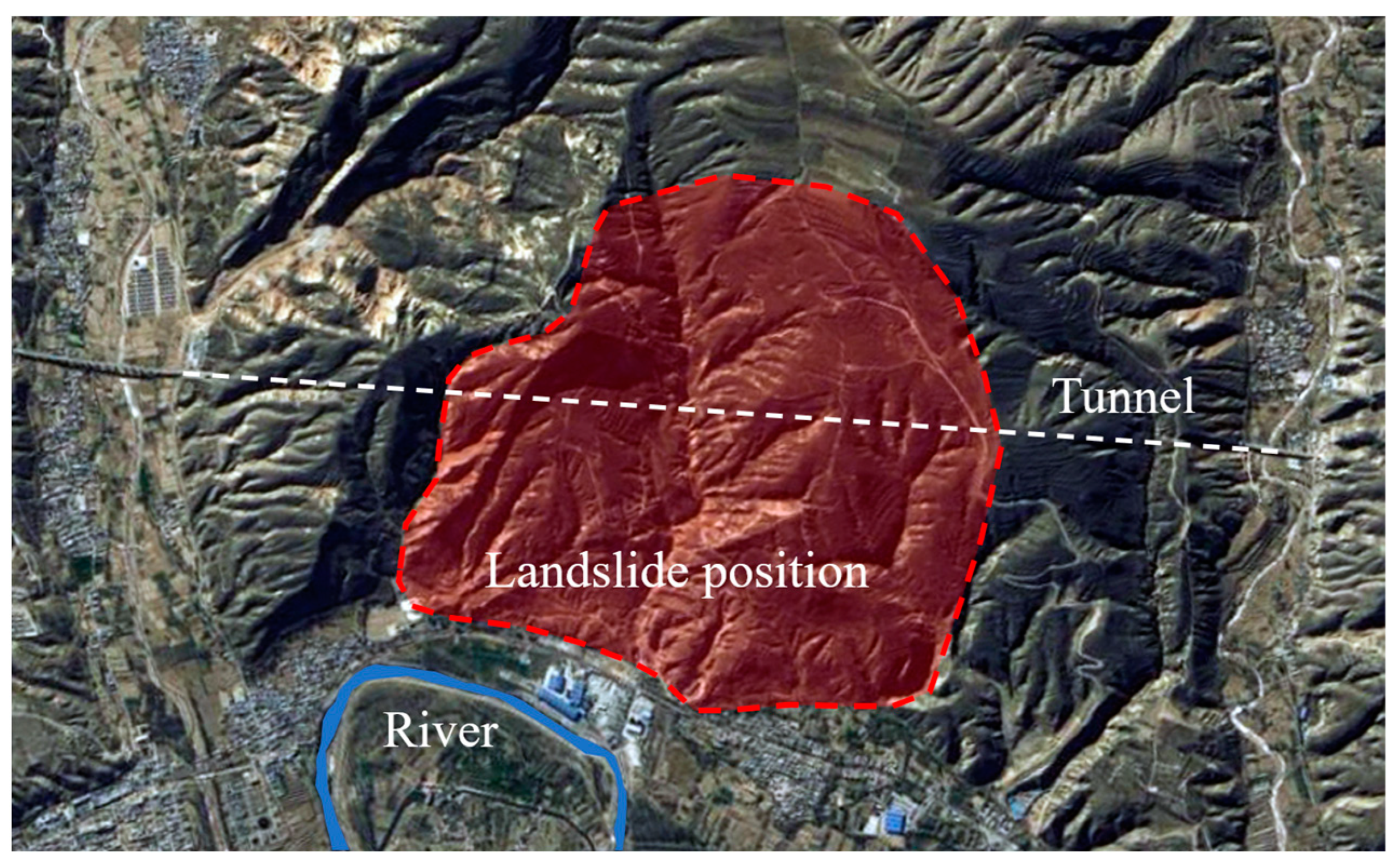
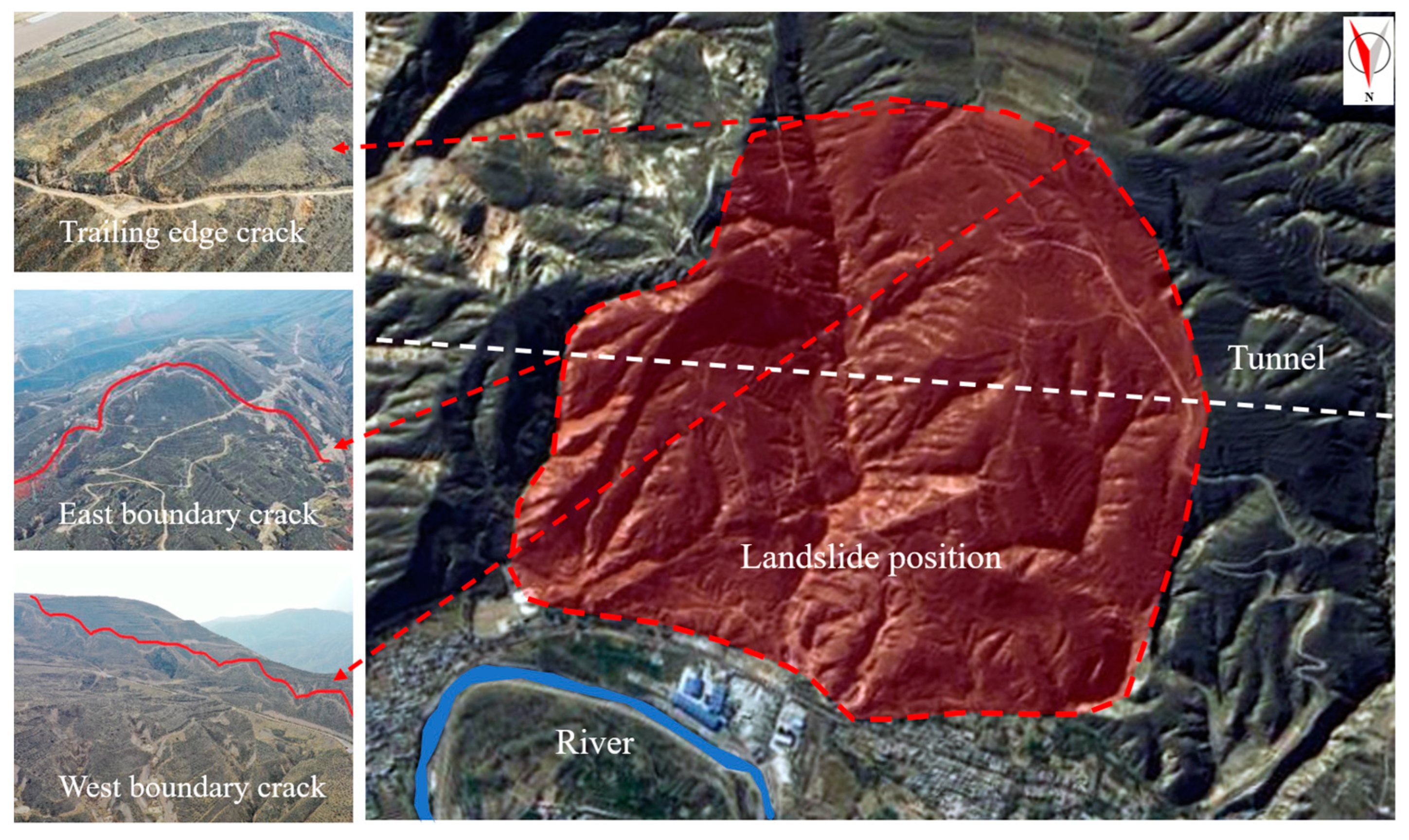
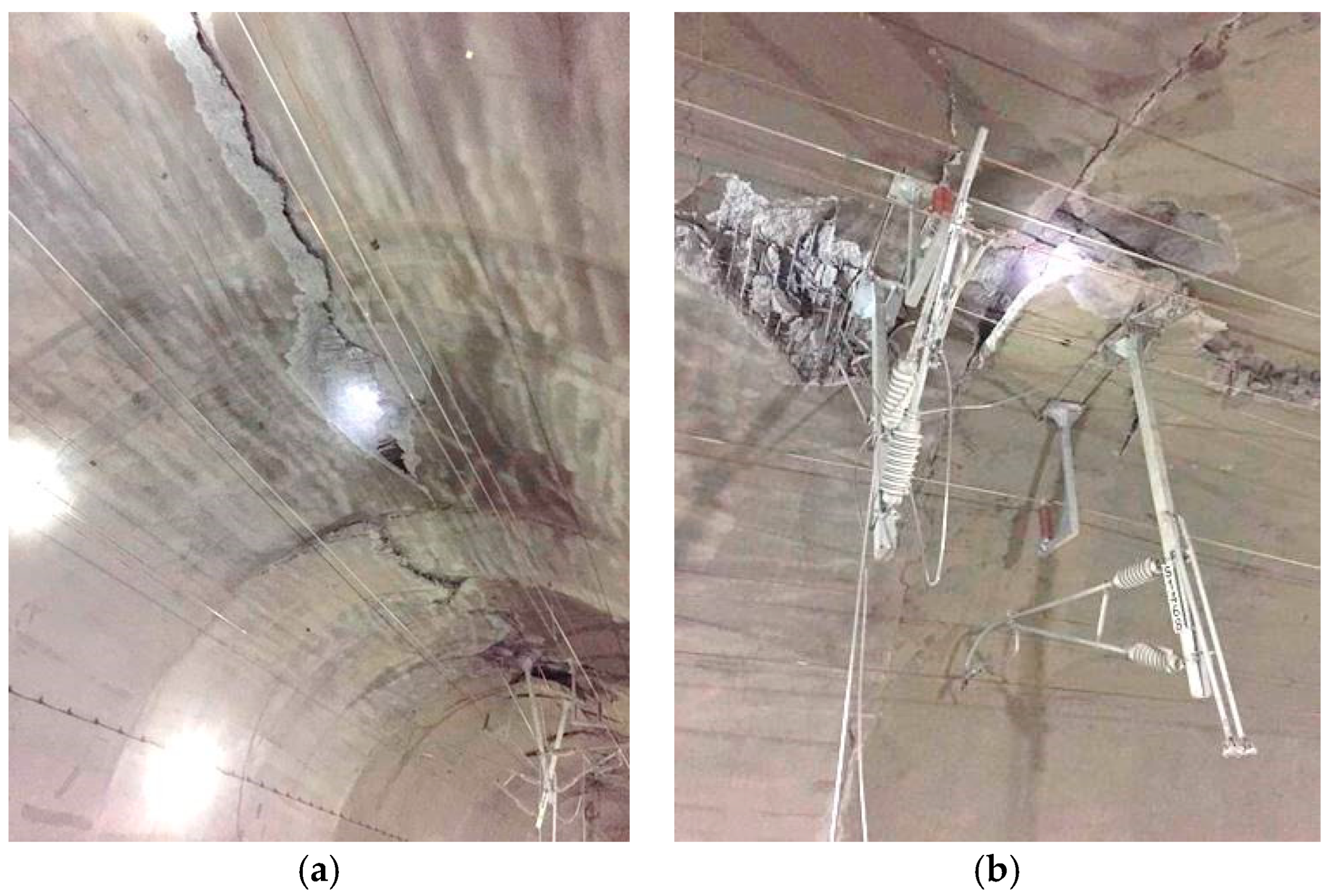



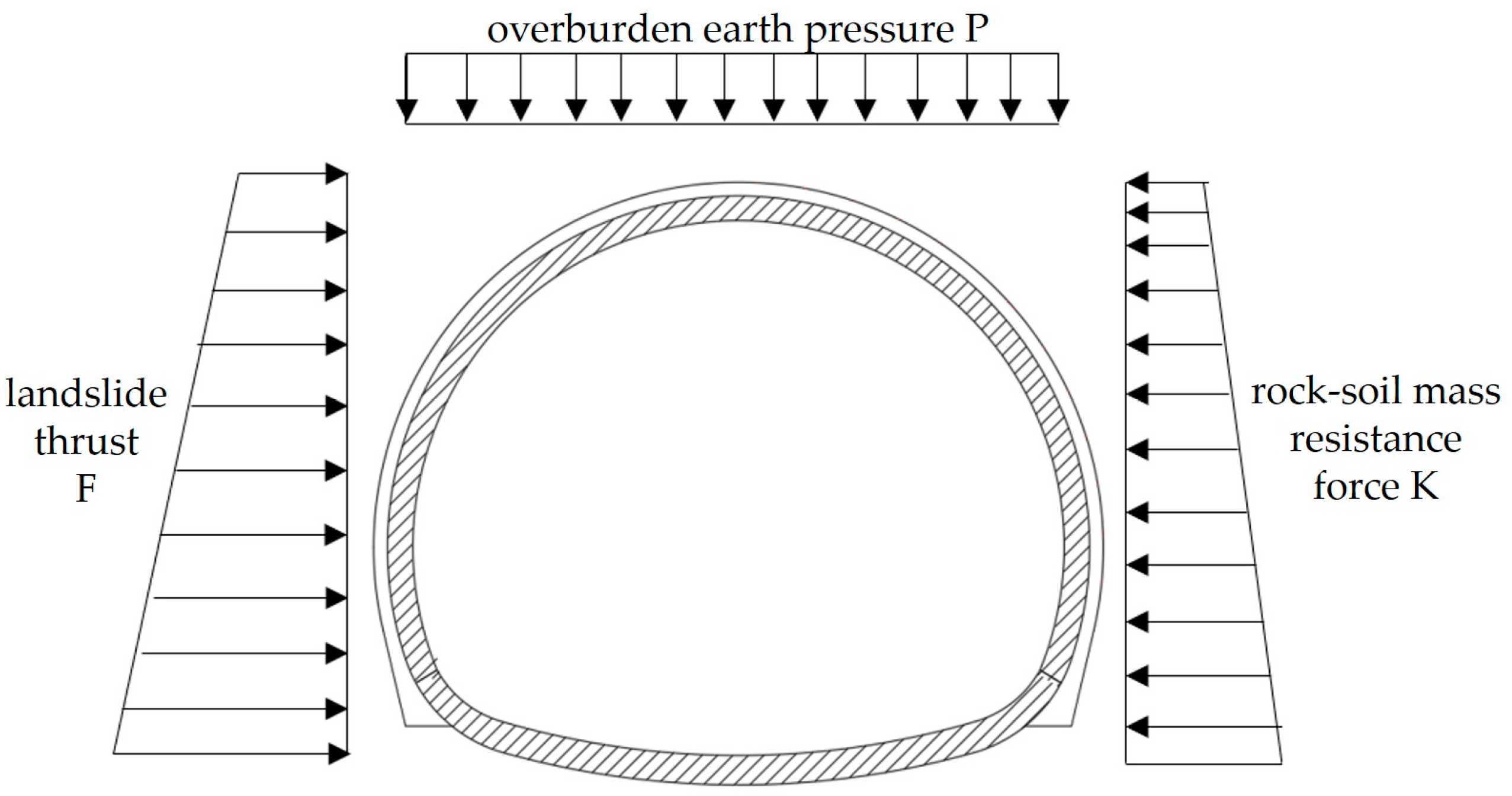

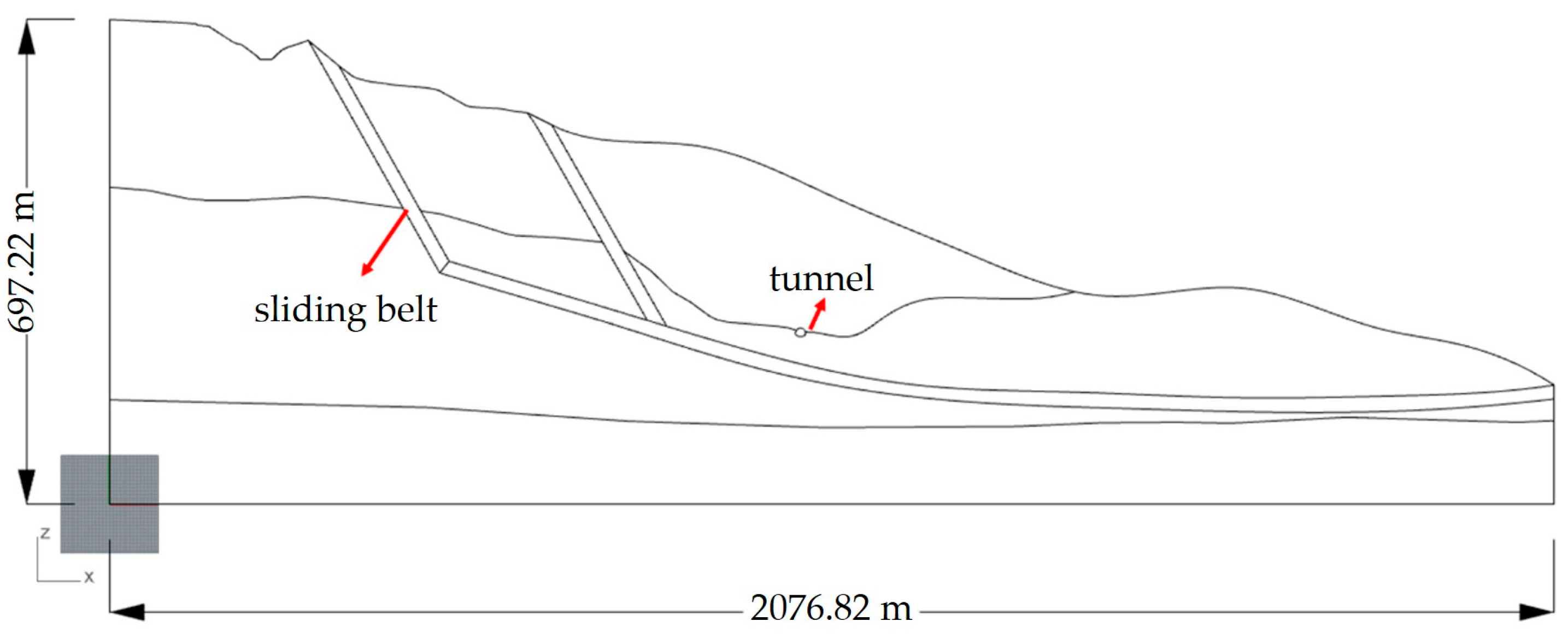
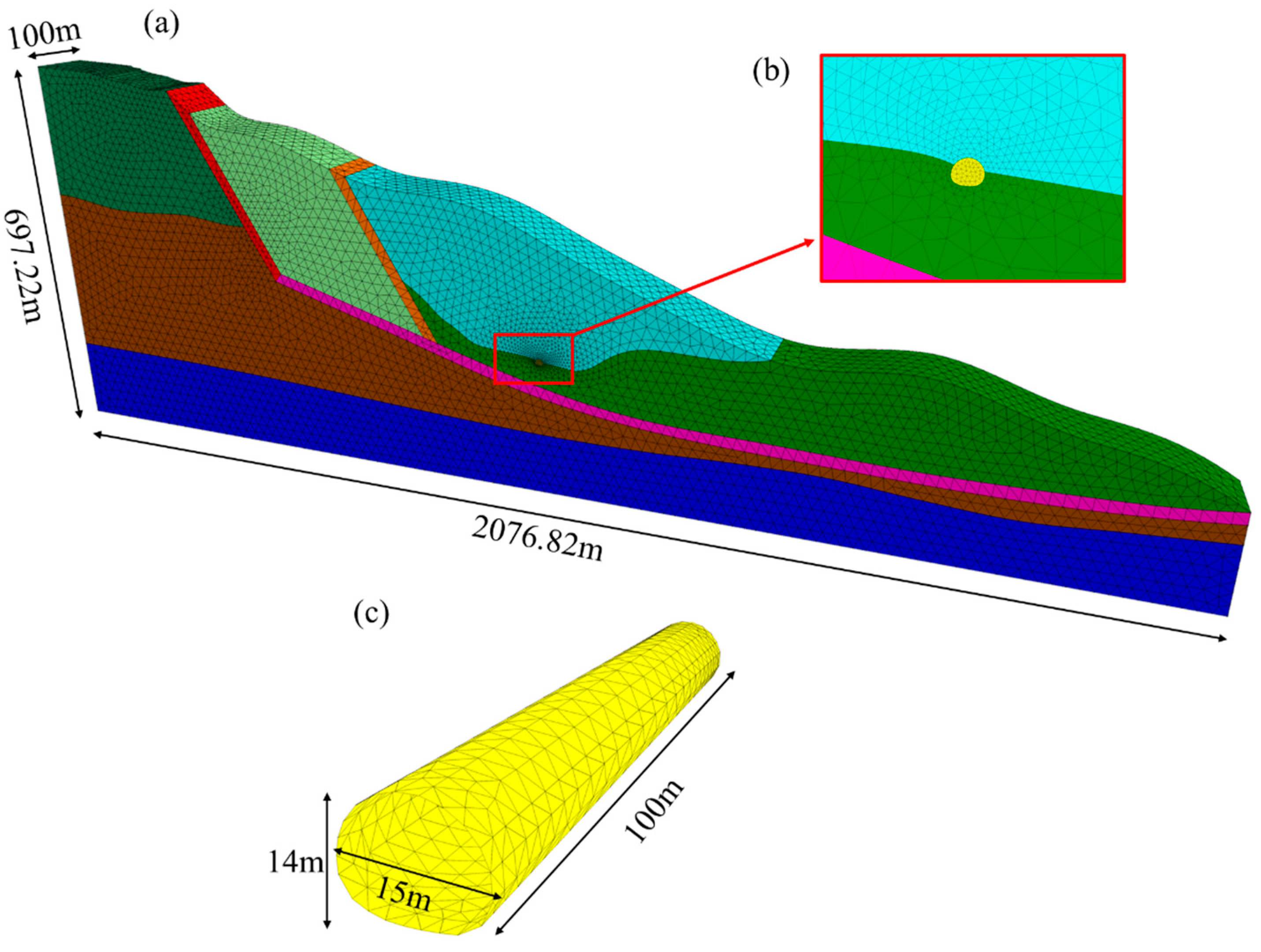
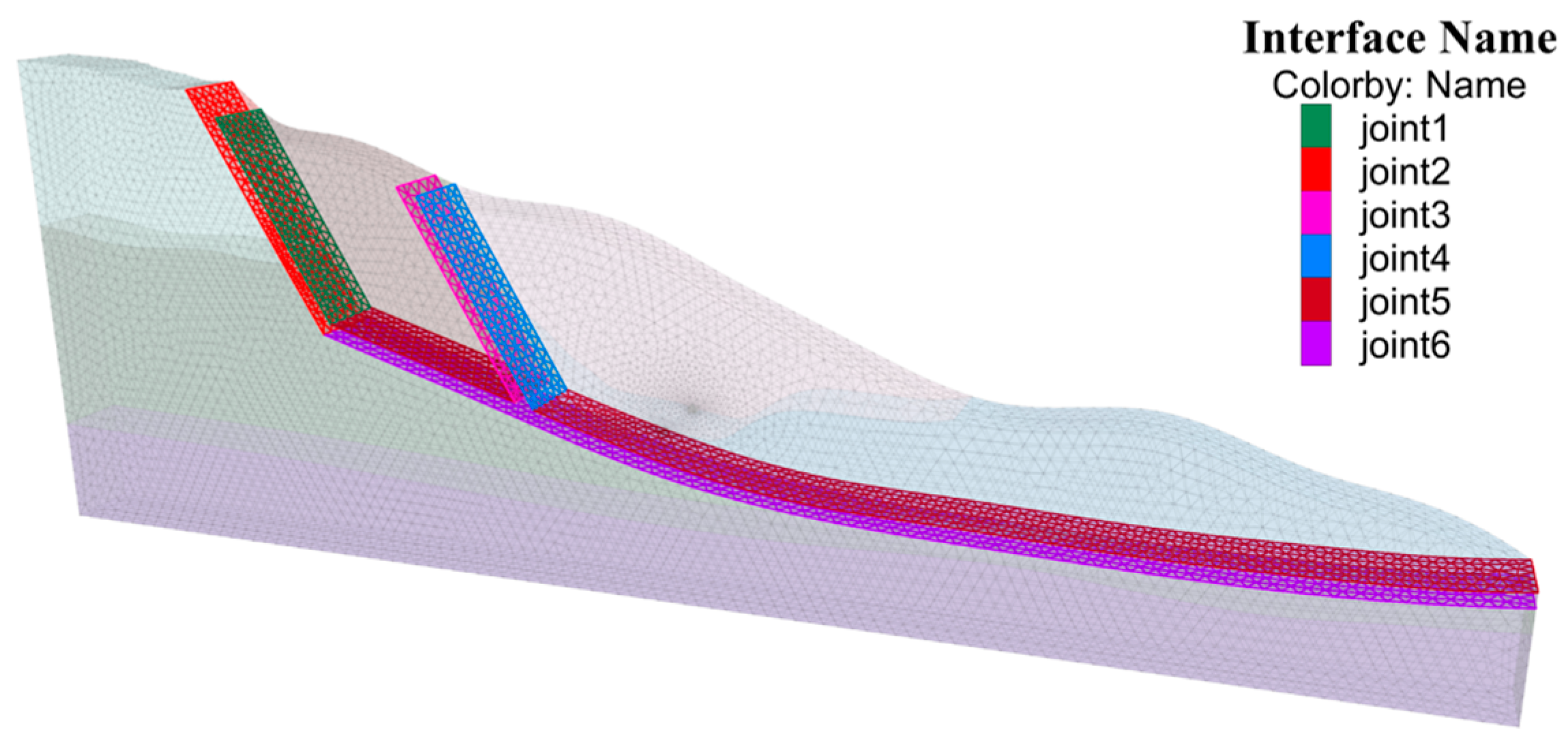

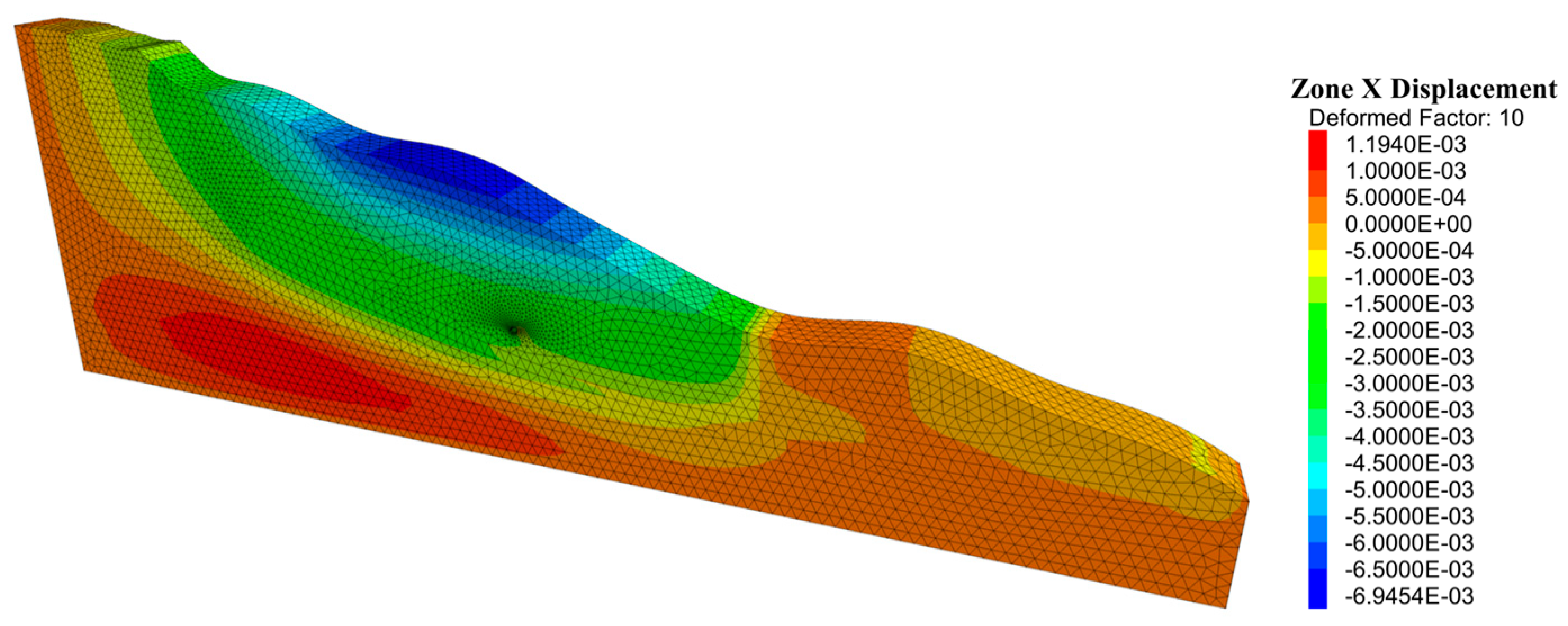

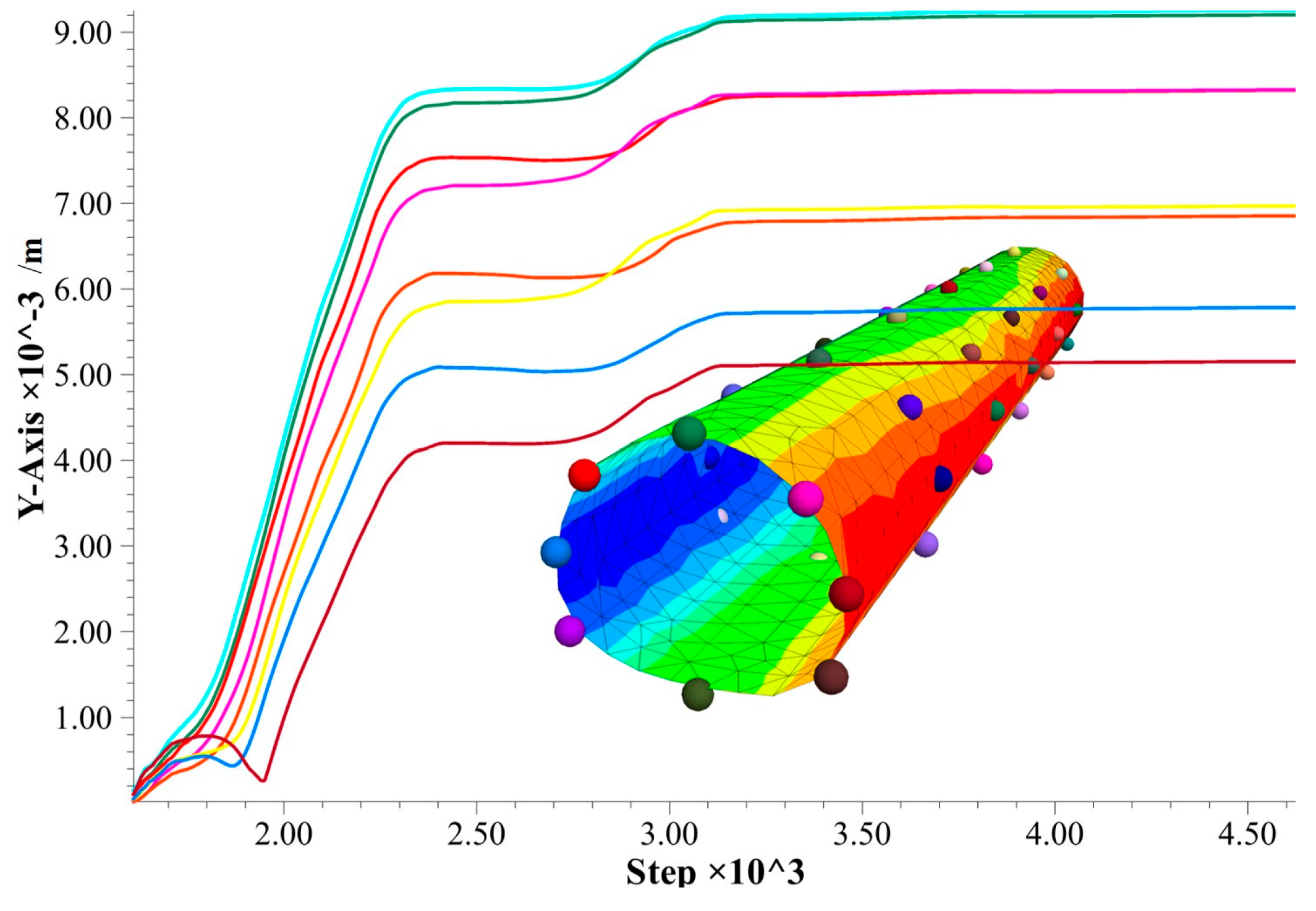
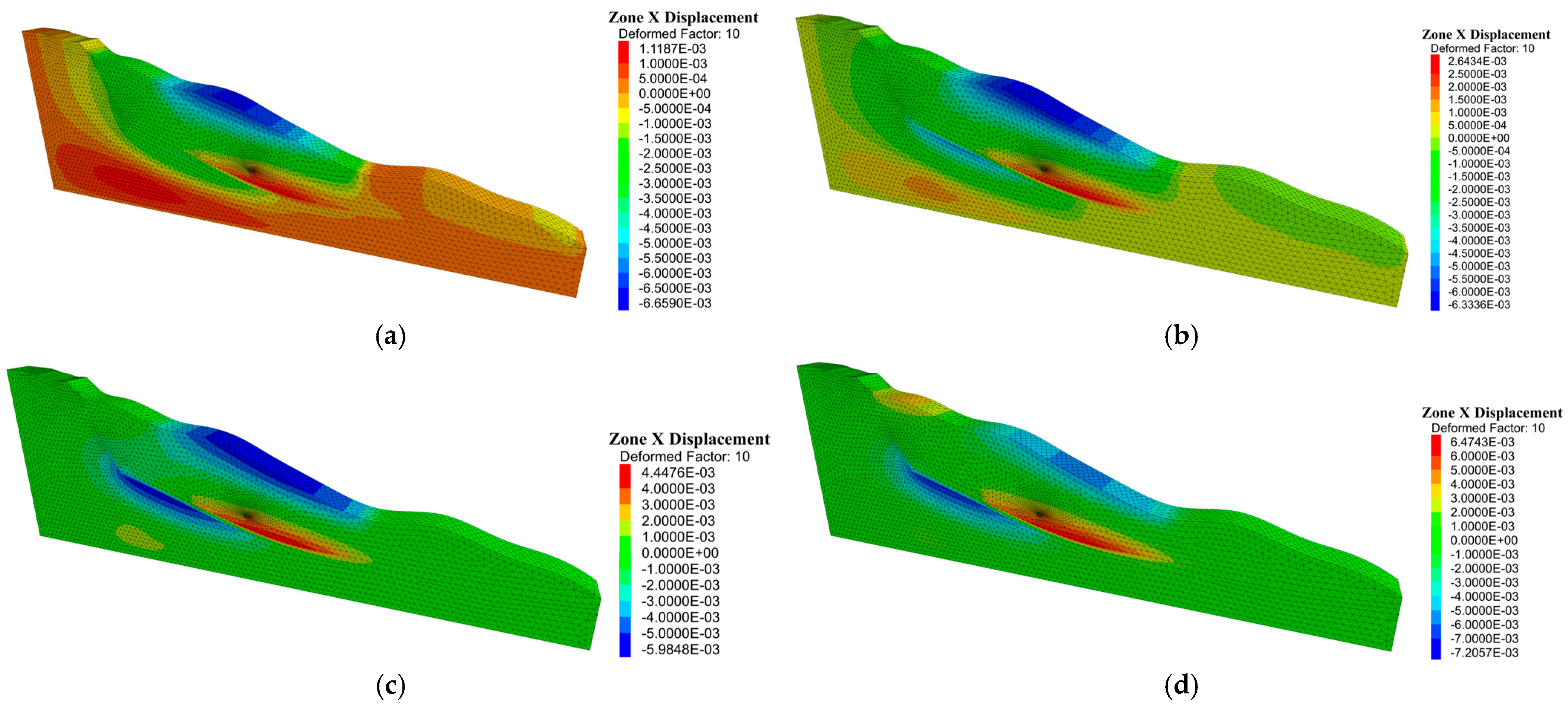
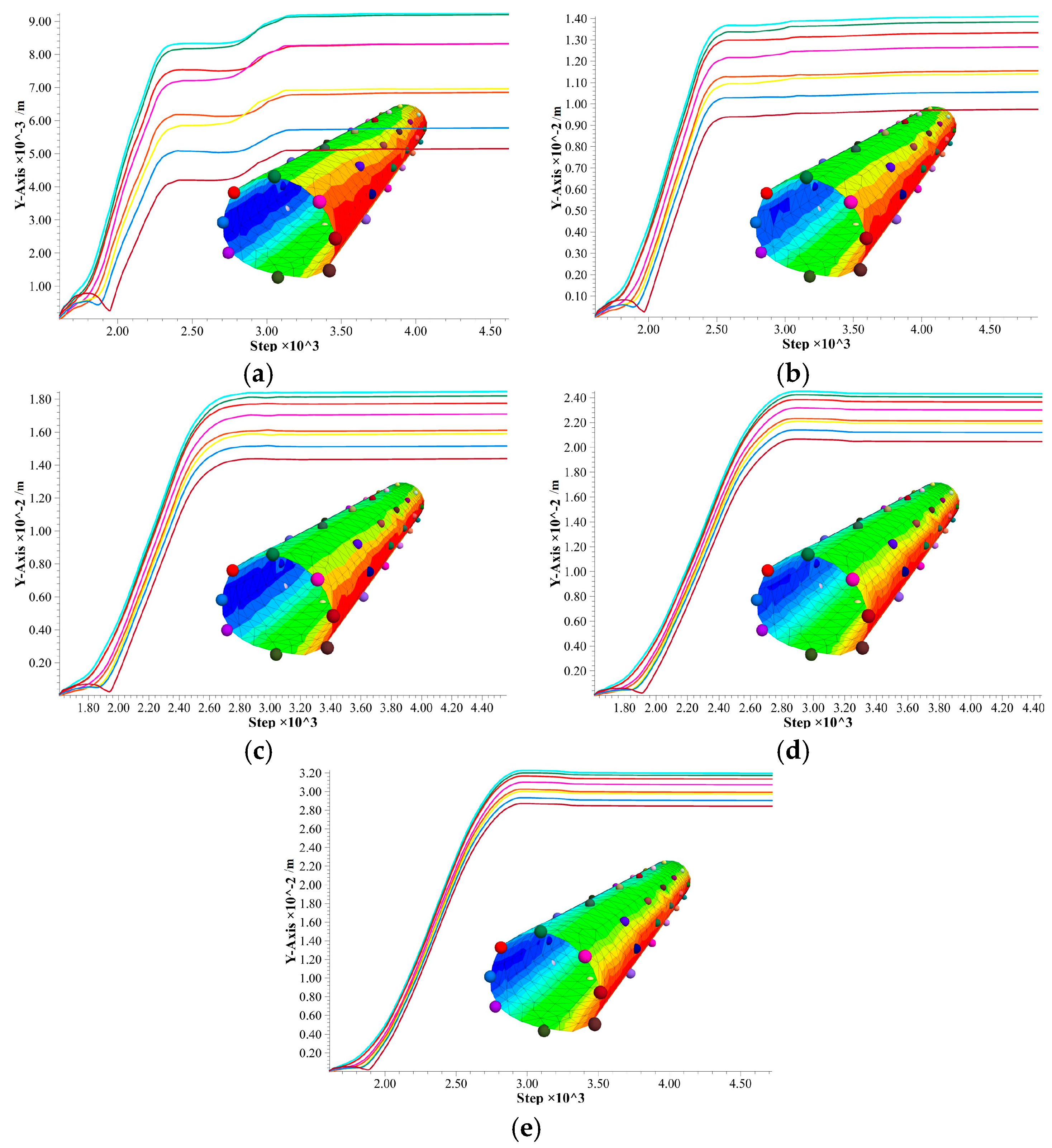

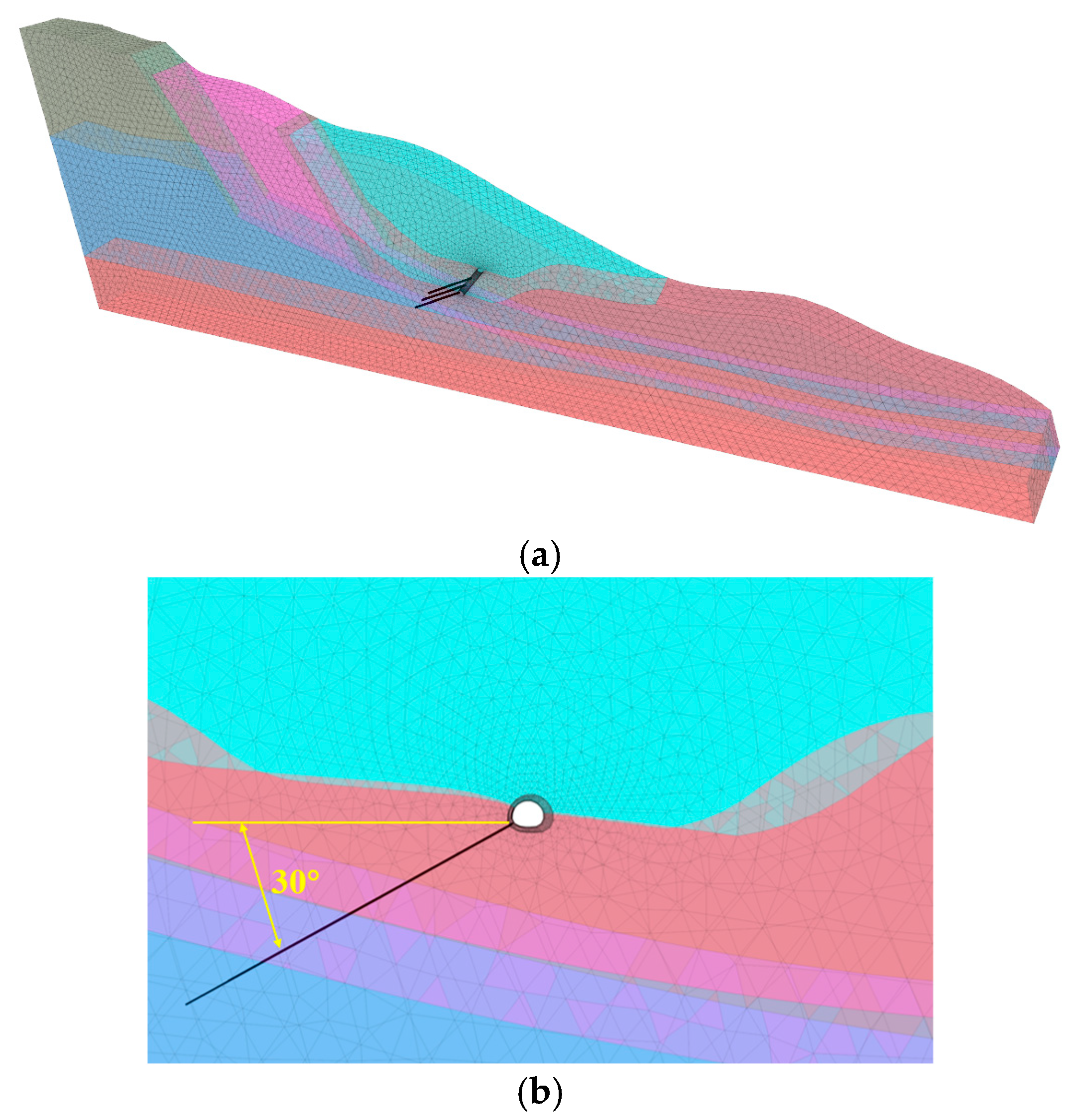
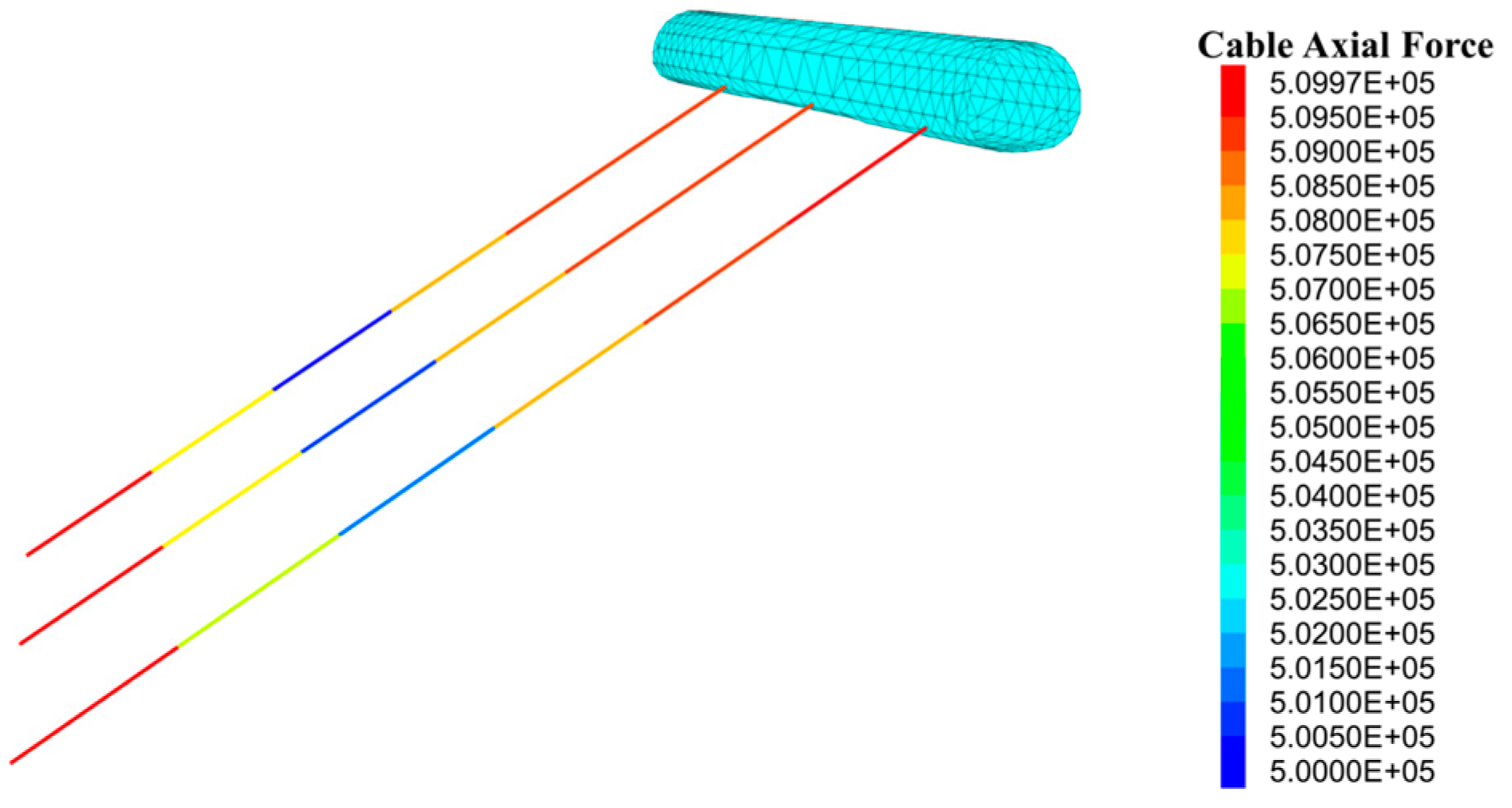
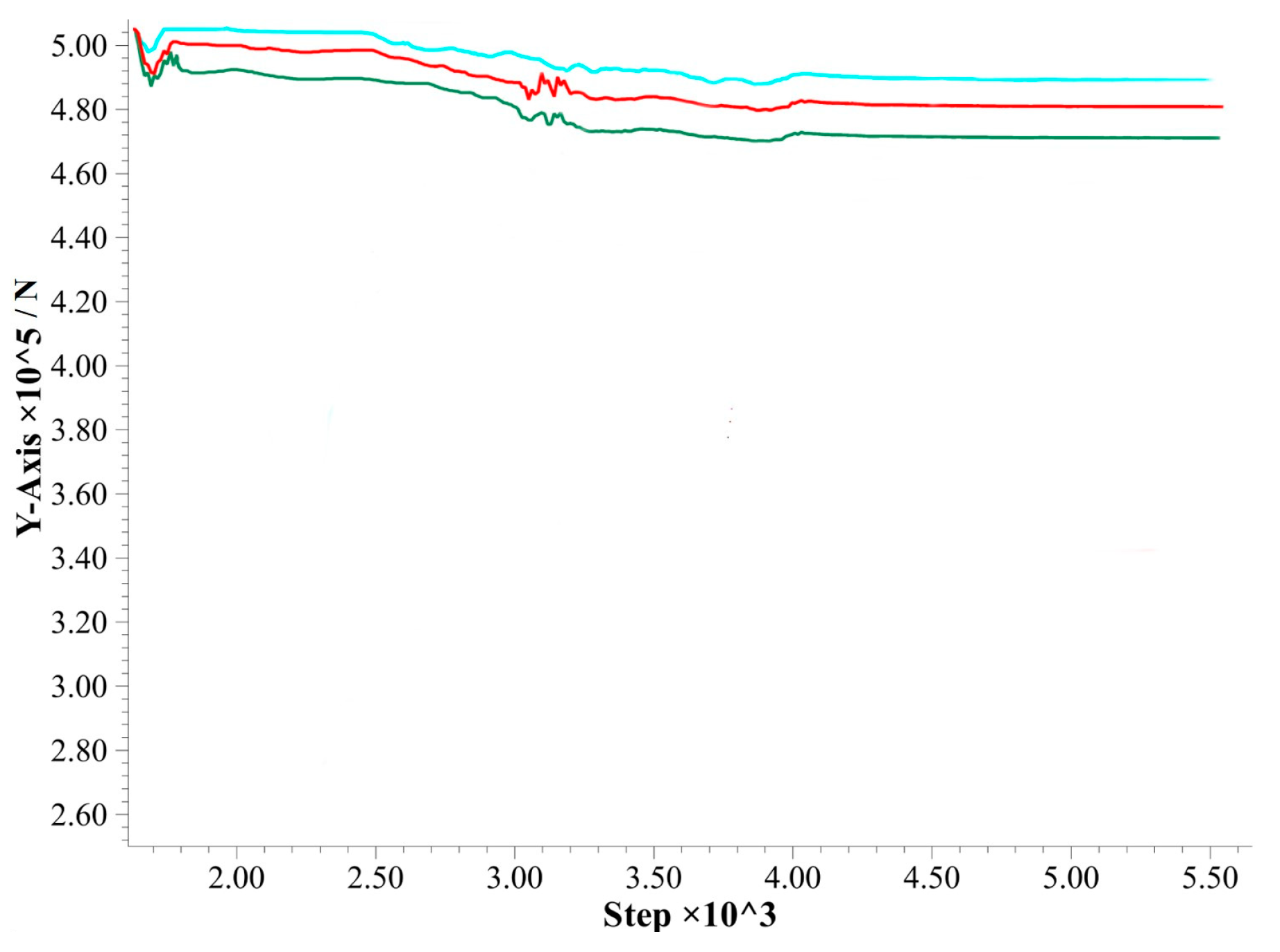
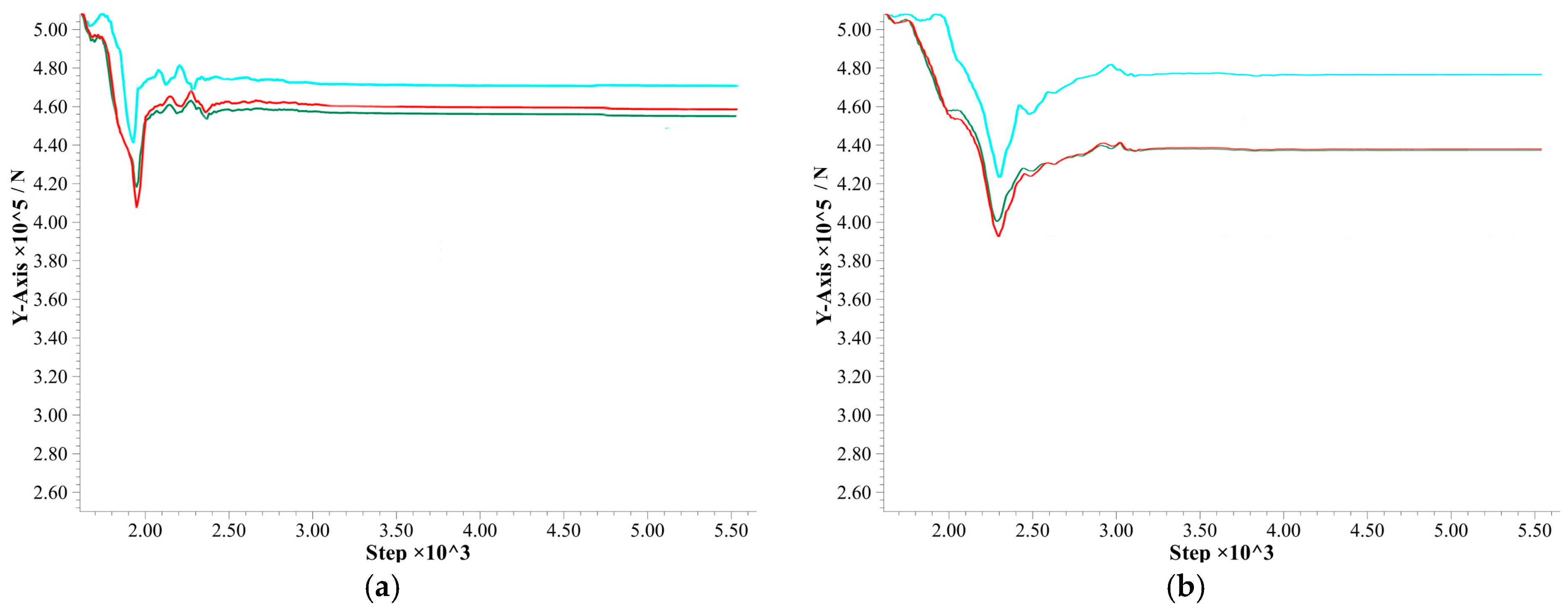

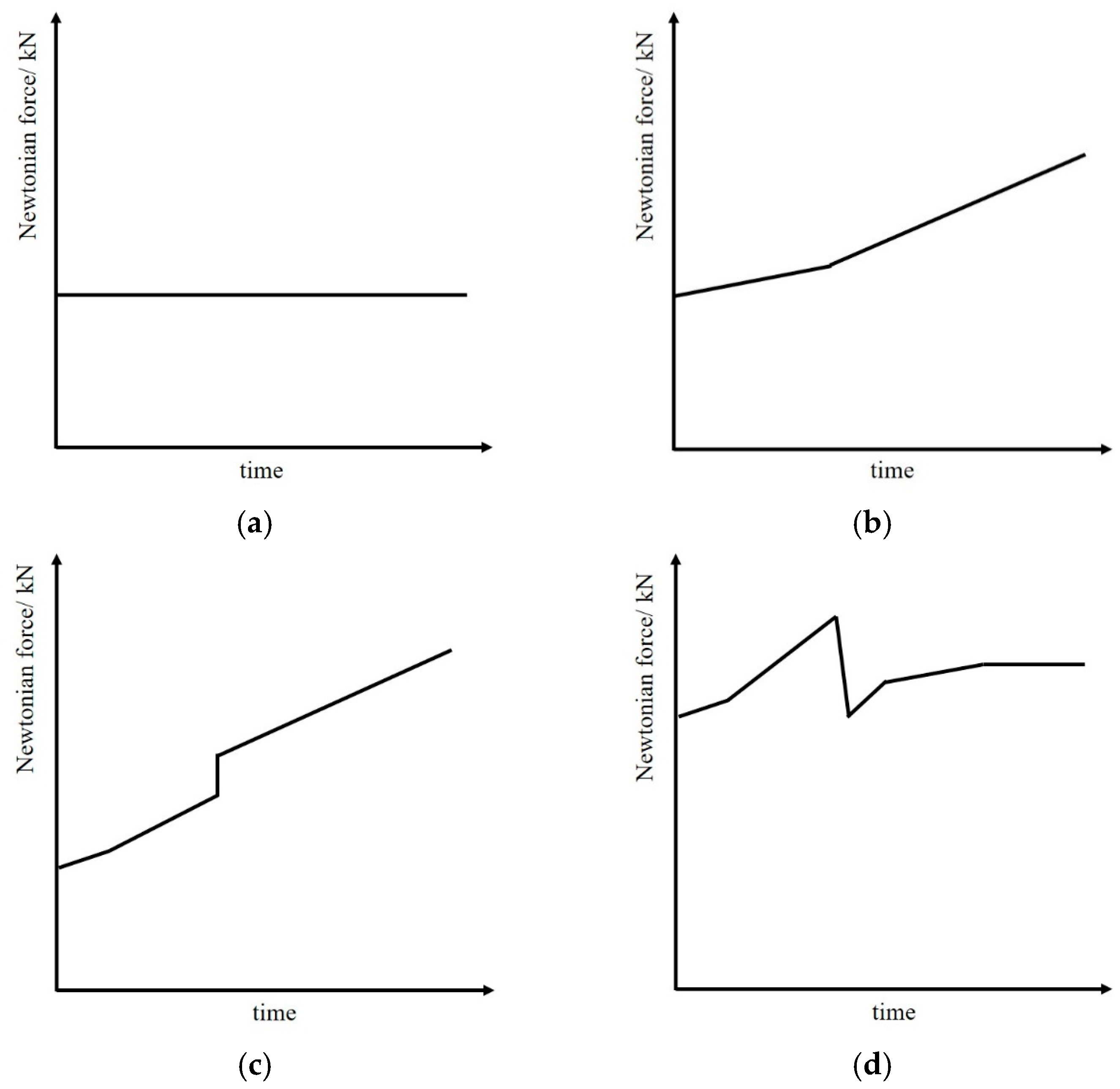

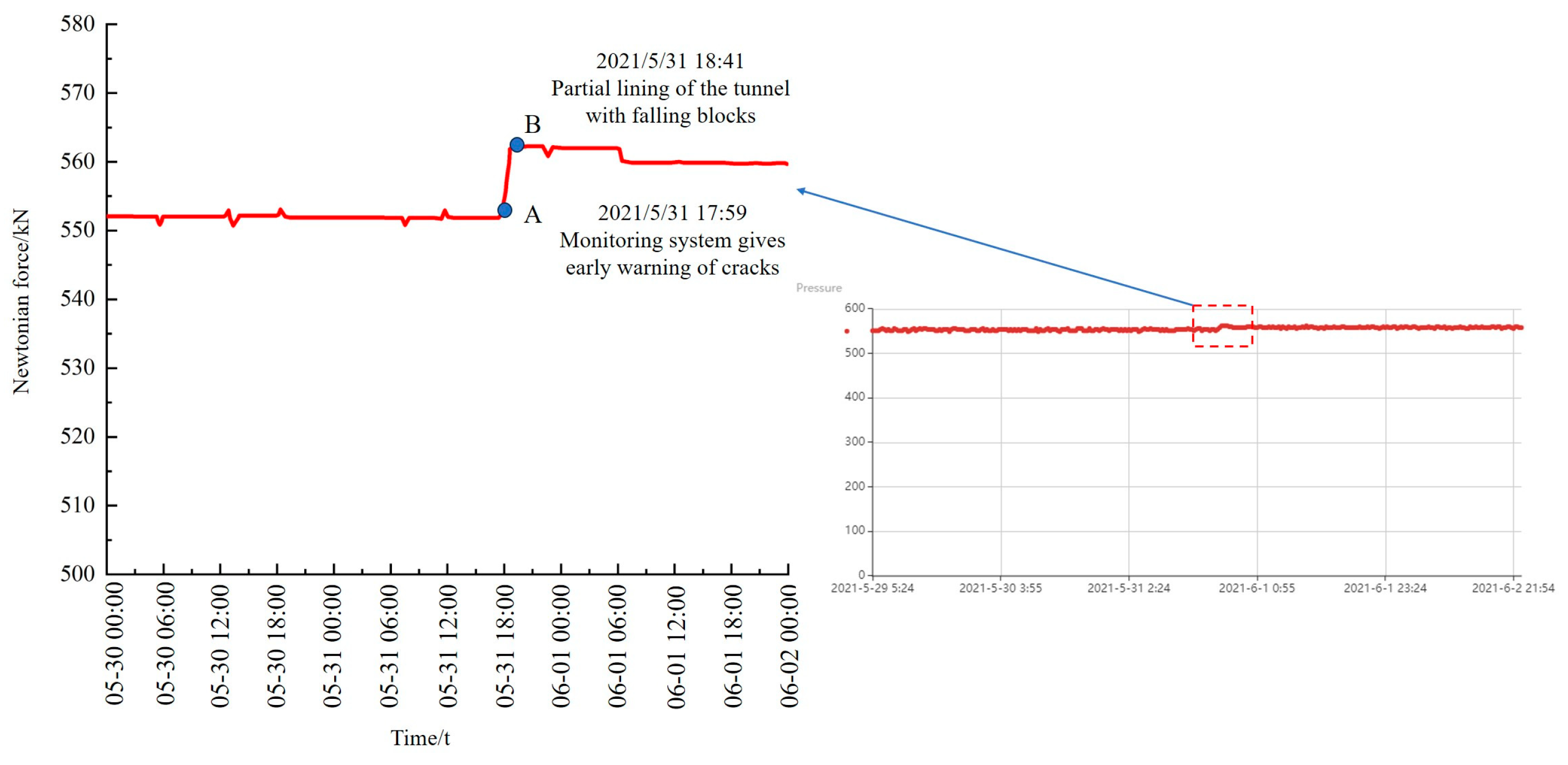


| Stratification | Gravity | Elastic Modulus MPa | Poisson Ratio | Angle of Internal Friction ° | Force of Cohesion kPa |
|---|---|---|---|---|---|
| moderately weathered sandstone-mudstone | 21 | 800 | 0.35 | 37 | 200 |
| strongly weathered sandstone-mudstone | 20 | 600 | 0.3 | 28 | 52.5 |
| fully weathered sandstone-mudstone | 20 | 200 | 0.32 | 22 | 30 |
| sliding belt | 18 | 80 | 0.35 | 17.13 | 20.1 |
| loess | 19 | 100 | 0.35 | 27 | 15 |
| earth fill | 18 | 100 | 0.35 | 28 | 13 |
| Plan Name | Reduction Coefficient | The Angle of Internal Friction of the Sliding Belt ° | Cohesion kPa |
|---|---|---|---|
| Plan 1 (original plan) | 1 | 17.13 | 20.1 |
| Plan 2 | 1.2 | 14.28 | 16.75 |
| Plan 3 | 1.3 | 13.17 | 15.46 |
| Plan 4 | 1.4 | 12.23 | 14.36 |
| Plan 5 | 1.5 | 11.42 | 13.40 |
| Plan Name | Reduction Coefficient | The Angle of Internal Friction of the Sliding Belt ° | Cohesion kPa |
|---|---|---|---|
| Plan 1 (original plan) | 1 | 16.35 | 19.3 |
| Plan 2 | 1.2 | 13.63 | 16.08 |
| Plan 3 | 1.3 | 12.58 | 14.85 |
| Plan 4 | 1.4 | 11.68 | 13.79 |
| Plan 5 | 1.5 | 10.9 | 12.87 |
| Plan Name | Reduction Coefficient | The Angle of Internal Friction of the Sliding Belt ° | Cohesion kPa |
|---|---|---|---|
| Plan 1 (original plan) | 1 | 18.64 | 22.6 |
| Plan 2 | 1.2 | 15.53 | 18.83 |
| Plan 3 | 1.3 | 14.34 | 17.38 |
| Plan 4 | 1.4 | 13.31 | 16.14 |
| Plan 5 | 1.5 | 12.43 | 15.07 |
Disclaimer/Publisher’s Note: The statements, opinions and data contained in all publications are solely those of the individual author(s) and contributor(s) and not of MDPI and/or the editor(s). MDPI and/or the editor(s) disclaim responsibility for any injury to people or property resulting from any ideas, methods, instructions or products referred to in the content. |
© 2024 by the authors. Licensee MDPI, Basel, Switzerland. This article is an open access article distributed under the terms and conditions of the Creative Commons Attribution (CC BY) license (https://creativecommons.org/licenses/by/4.0/).
Share and Cite
Mi, M.; Tao, Z.; Pang, S.; Liu, K.; Qin, K. Numerical Simulation Study on Deformation Mechanism of Tunnel–Landslide Orthogonal Systems and Early Warnings of Imminent Sliding. Appl. Sci. 2024, 14, 2790. https://doi.org/10.3390/app14072790
Mi M, Tao Z, Pang S, Liu K, Qin K. Numerical Simulation Study on Deformation Mechanism of Tunnel–Landslide Orthogonal Systems and Early Warnings of Imminent Sliding. Applied Sciences. 2024; 14(7):2790. https://doi.org/10.3390/app14072790
Chicago/Turabian StyleMi, Meng, Zhigang Tao, Shihui Pang, Keyuan Liu, and Ke Qin. 2024. "Numerical Simulation Study on Deformation Mechanism of Tunnel–Landslide Orthogonal Systems and Early Warnings of Imminent Sliding" Applied Sciences 14, no. 7: 2790. https://doi.org/10.3390/app14072790
APA StyleMi, M., Tao, Z., Pang, S., Liu, K., & Qin, K. (2024). Numerical Simulation Study on Deformation Mechanism of Tunnel–Landslide Orthogonal Systems and Early Warnings of Imminent Sliding. Applied Sciences, 14(7), 2790. https://doi.org/10.3390/app14072790






